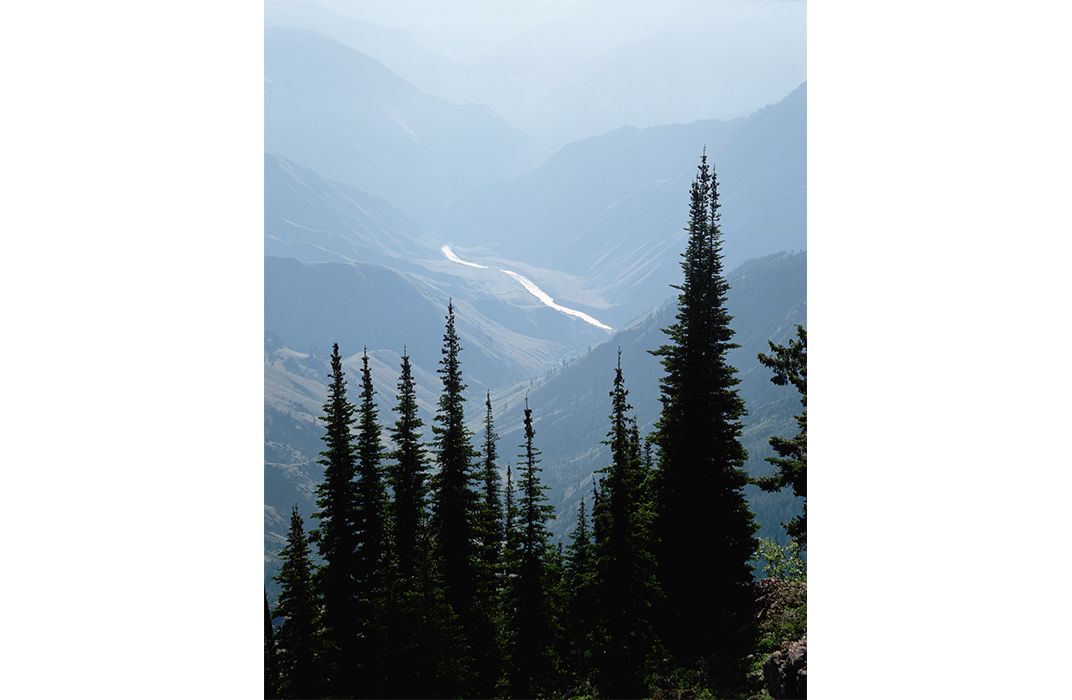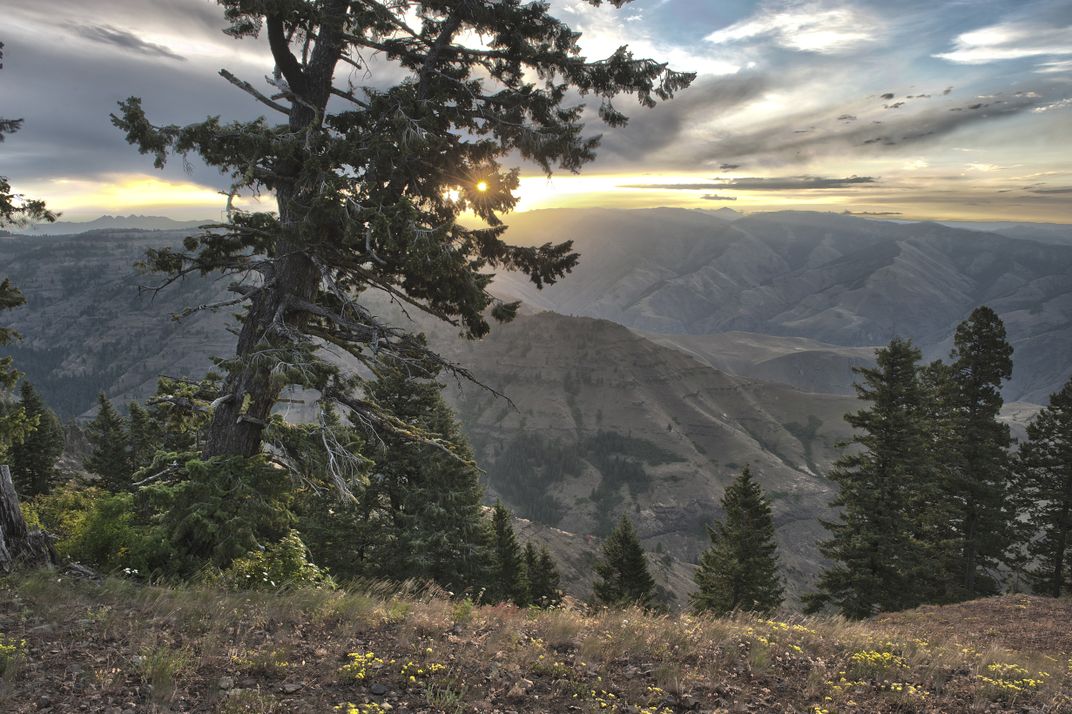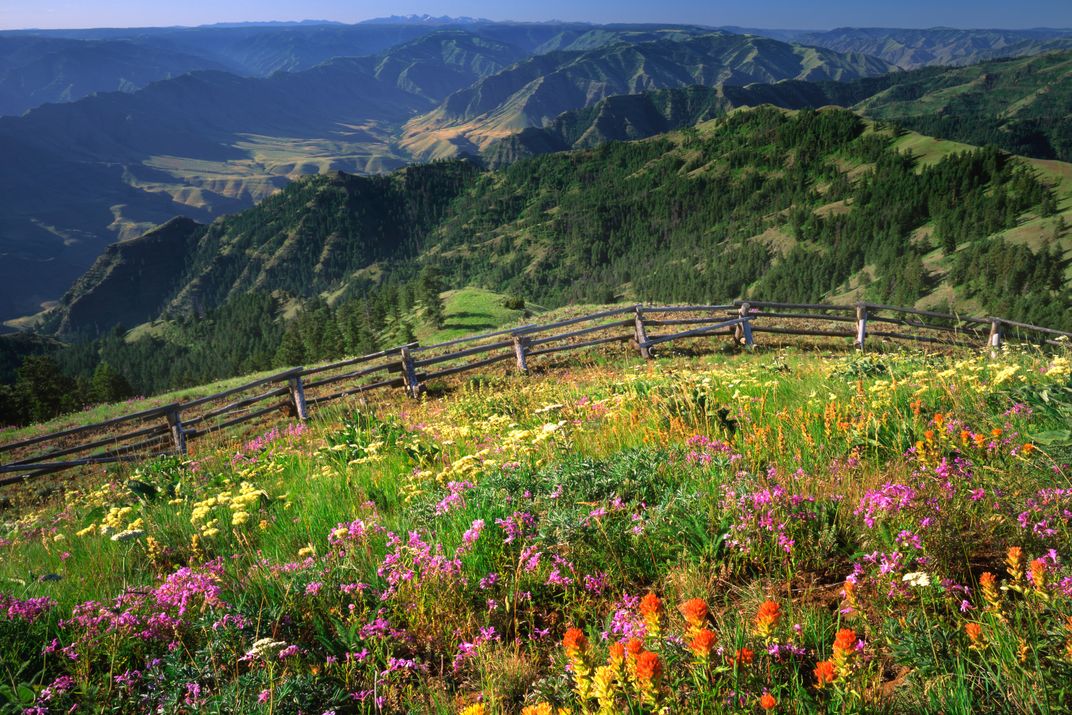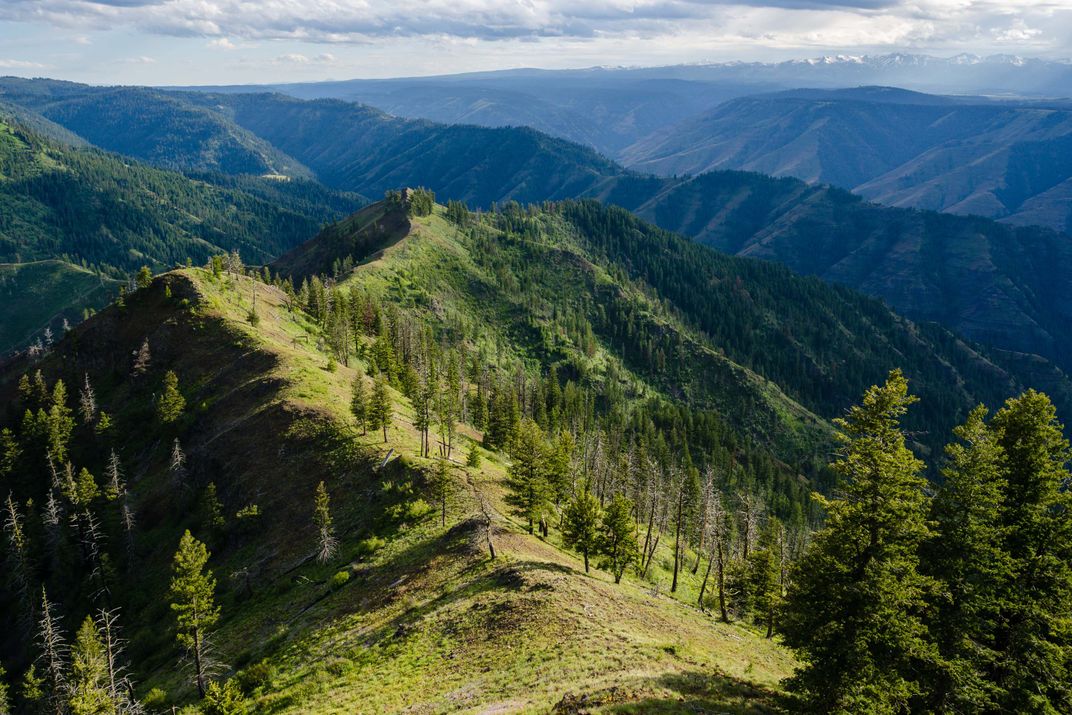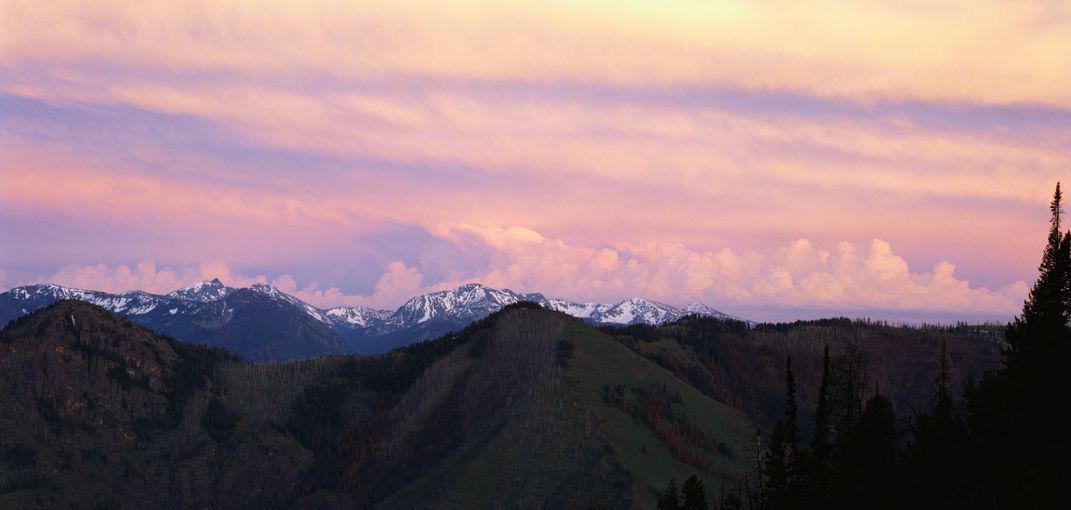Hells Canyon Wilderness
Deep river gorge, Seven Devils Mountains, ponderosa pine
Location: Oregon, Idaho
Size: 218,019 acres
Year Designated: 1975
Fast Fact: Hells Canyon Wilderness has the deepest river gorge in the United States, and some of the deepest gorges on Earth.
Straddling Oregon and Idaho, the Hells Canyon Wilderness is split into two distinct parts by the Snake River, which flows through the canyon on its way to the Columbia River. To the east is the Idaho side of the wilderness, characterized by dry, barren slopes that drop into the canyon. This side of the wilderness area also contains the Seven Devils Mountain Range, so named for the seven dancing devils rumored to be seen by a lost Indian wandering in the area. The Oregon side, much larger than the Idaho side, features grassy slopes and areas dotted with Oregon’s state tree, the Douglas Fir.
Hells Canyon is America’s deepest river gorge, dropping more than a mile below Oregon’s western edge, and more than 8,000 feet from the peak of He Devil Mountain in Idaho’s Seven Devils Mountain Range. For nearly 6 million years the deep gorge has been carved by the steady erosive force of the Snake River. The oldest rocks in the canyon come from underwater volcanoes, which were created around 150 million years ago thanks to the jostling of the Earth’s tectonic plates. As recently as 6 million years ago, vast parts of Hells Canyon were inundated with lava, also contributing to the unique geological formations in the area. Though it’s certain that humans inhabited the area as early as 7,100 years ago (thanks to the discovery of a rock shelter in the area), clovis points have been unearthed which suggest that humans may have lived in the area as far back as 15,000 years ago.
